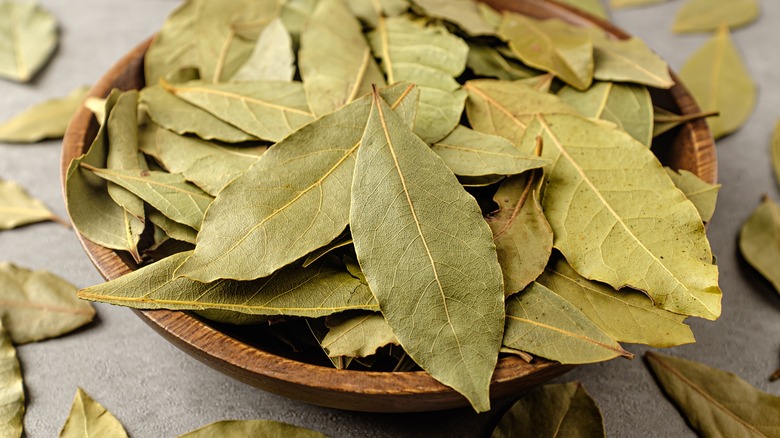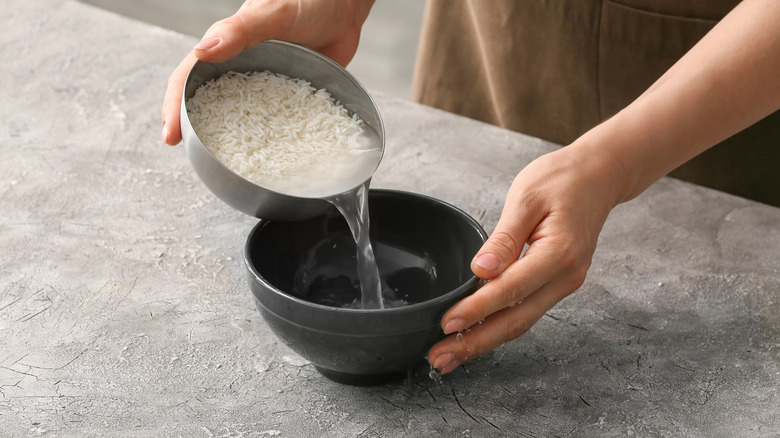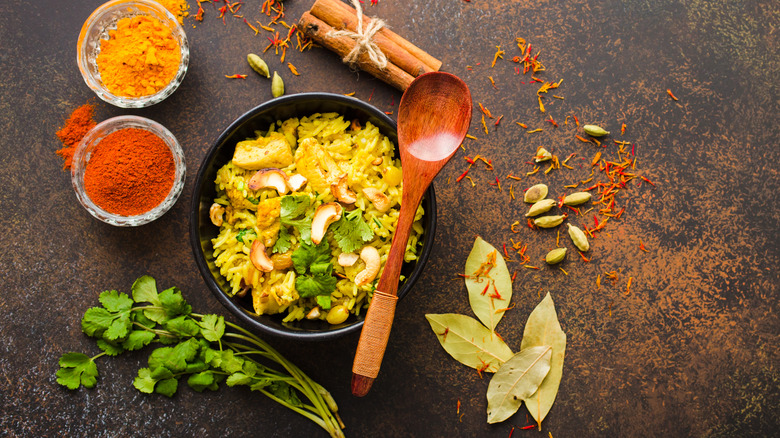A Few Bay Leaves Are All You Need To Elevate Basic Rice
Rice is one of the most versatile kitchen staples available, but it's also incredibly easy to get wrong — for example, consider how disappointing gummy or undercooked rice can be. One of the simplest ways to perfect rice and enhance its flavor is by incorporating an understated ingredient into your culinary repertoire: bay leaves.
You're probably accustomed to adding bay leaves to your stews, soups, and braises, where they help cut through and balance rich, fatty flavors. Introducing a bay leaf or two when cooking a pot of rice will likewise infuse it with a fragrant essence reminiscent of green tea or thyme. This addition is subtle enough not to interfere with the rest of your meal, while still elevating the rice's flavor profile.
However, be sure to use dried bay leaves for this purpose. Fresh bay leaves have a much more potent flavor than their dried counterparts, which, in a dish like this, could overwhelm the rice with an intense, medicinal taste.
Techniques for great rice
When preparing your rice with bay leaves, the process is straightforward: Add the leaves to the water when you start cooking (before the water boils), and remove them when the rice is ready to eat. The herbal flavor will infuse the grains during cooking, and the leaves can be discarded afterward since they aren't palatable on their own. Additionally, there are other valuable tips for making an excellent bowl of rice.
Generally, you should wash your rice thoroughly before cooking to remove any debris that might have adhered to the grains, as well as to rinse off surface starches. Removing these starches prevents the rice from sticking or clumping together, except when you're aiming for creamy and sticky rice.
To rinse the grains, place a serving in a large bowl, fill it with water, and agitate with your hands. The water will become cloudy. When this happens, carefully pour out the water, ensuring the rice stays in the bowl, and repeat this process until the water runs clear.
If you're cooking your rice on the stovetop, avoid stirring it while it cooks. Stirring can lead to a disappointing texture, as the starches in the rice rub against each other and stick together, resulting in a mushy outcome. While this texture is ideal for risotto, it's likely not what you want for most other dishes.
Herbs and spices to pair with bay leaves
Bay leaves are a team player; they help other ingredients taste their best, making them an ideal complement to other herbs and spices added in your rice. Turmeric, a classic ingredient in rice dishes from the Middle East to South Africa, is an excellent choice. It not only imbues your rice with a stunning yellow hue, but its aromatic flavors also meld well with bay leaves.
Bay leaves are also a staple in the Indian dish biryani. You can pair them with common seasonings like cinnamon, cloves, or cumin seeds, which will amplify the fragrant flavors already present in the rice. In such cases, opt for basmati rice, whose inherent taste harmonizes with these dishes. Try it out to add extra zest to preparations like Sindhi-style mutton biryani.
Fresh herbs are another great addition. To enhance the brightness that bay leaves contribute to your rice, consider mixing in a healthy amount of cilantro and lime after cooking. Parsley or mint are also suitable choices to mix in with your cooked rice.



